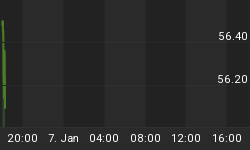While sitting next to the chief executive officer (CEO) of Blackrock on a panel at the recent Delivering Alpha Conference, billionaire Carl Icahn commented on the risk associated with investing in a high-yield bond exchange traded fund (ETF). Making a negative comment on a financial product when its CEO is sitting right next to you might make some people feel a little uncomfortable, but billionaires are not average people. Icahn's concern was regarding the lack of liquidity in high-yield bonds. If redemptions cannot be met in an ETF that holds junk bonds, investors could be forced into taking severe losses. However, blaming an institution for losing money in an oversized ETF product that holds a large number of junk bonds is sort of like blaming Dr. Joseph-Ignace Guillotin for a capital punishment contraption bearing his name. Guillotin was neither the inventor of the decapitation device nor a fan of the death penalty. The French physician only recommended its use as a more humane way to deliver a death penalty sentence. Likewise, Blackrock did not invent the high-yield bond ETF and offers a number of other investment products that vary in terms of risk level. If you do not like junk bonds, you might consider investing in a more conservative financial product, which would result in a shaving cut rather than a beheading if illiquid junk bonds were to head south.
Unfortunately, in this low-interest-rate environment, the more conservative ETF products pay out about as much yield as canned goods stored in a basement do. The reason for this ultra-low-interest-rate environment is because the bond market is being manipulated by the Federal Reserve (Fed). Out of desperation for more income, investors are moving out of their comfort zones and into higher-risk bond investments. The unintended consequence of this uptick in the number of yield-hungry investors is that corporations have issued a record number of corporate bonds to satisfy their voracious appetite (see chart below). A previous academic study showed how a rising volume of new bond issuance translates into higher default rates years later. As bonds age and trade on the open market for at least three years, the default rate starts to climb.

* Data courtesy of the Securities Industry and Financial Markets Association (SIFMA)
It would be one thing if a large amount of this newly issued corporate debt has been used to expand various business enterprises, but instead, a large amount of the debt has been used to repurchase company stock. As the number of outstanding shares of a particular company decline after stock repurchases, the per-share performance metrics are juiced upward. This form of financial engineering benefits executives over the short term by raising the value of their stock options. Unfortunately, exchanging company stock for bonds does not result in more economic activity or rising employment. No one knows for sure when this party will come to an end, but when it does, investors who own high-yield bond ETFs risk losing a significant amount of capital.
If the interest rate on a certificate of deposit (CD) at a bank is not paying the bills and choosing a high-yield bond ETF looks like going on a future date with Madame la Guillotine during the Reign of Terror in France, what should an investor do? You might think outside of the box for a moment and embrace a non-scalable value investing methodology not easily implemented by large financial institutions that market ETF products to retail investors. These mega-sized firms are more interested in creating financial products unconstrained by the future amount of money flowing into their investment products. That also holds true for financial management companies that fancy themselves as embracing some form of value investment methodology (see "Benjamin Graham and the Financialization of Value Investing")
A non-scalable value investing methodology popularized by Benjamin Graham is one where securities are purchased below net current asset value (NCAV). As the chart below indicates, NCAV stocks outperformed both high-yield bonds and stocks between 1980 and 2013. The outperformance averaged out to at least 4% on an annual basis.

*High-yield bond returns are represented by the Salomon Smith Barney High Yield Composite Index from 1980 through 2002 as well as the Credit Suisse High Yield Index from 2003 onward.
** No more than a 5% weighting was held in any one NCAV stock, with the balance remaining in United States Treasury Bills.
This outperformance occurred despite the fact that only a limited number of NCAV stocks were available for purchase in some years over the study period. The NCAV portfolio in the chart assumed that no more than a 5%weighting was invested in any one stock and that the universe of stocks was reviewed only once a year for new candidates to purchase. Given those constraints, not all years were fully invested in the NCAV portfolio. Some years had only a 5-10% weighting in stocks, with the balance remaining idle in low-interest-bearing United States Treasury Bills. This limited portfolio weighting in NCAV stocks in some years did not result in long-term underperformance relative to a fully invested stock or high-yield bond portfolio.
An ETF product holding stocks or high-yield bonds also charges a management fee, thus reducing performance even further relative to the NCAV portfolio. With the Fed promulgating a zero-interest-rate policy over the past seven years, restricting a portfolio to only NCAV stocks and cash still does well over the long run.
















